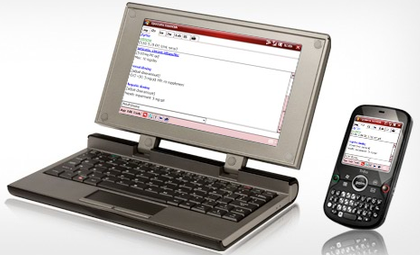TechCrunch’s Michael Arrington makes some interesting points in…
Three Reasons Why Netbooks Just Aren’t Good Enough
I think I agree with his basic point that netbooks are NOT notebook replacements. But, I disagree with the rationale given. Here are his main points and my issues with them.
1. Arrington says netbooks are underpowered: The question is what does he mean by underpowered? Underpowered for what? Video processing? Yep. Heavy PhotoShop use? Yep. 3D graphics intensive games? Yep, again. But, what about what netbooks are presumably designed for: Web browsing, email, word processing, small to medium size spreadsheets, etc. The netbooks I’ve tried perform these tasks just fine. Quite frankly, the Atom processors in the Acer Aspire One and Asus Eee PC 1000H I have are plenty fast compared to desktop and notebook PCs I used a couple of years ago back when I was using Windows XP and Linux. Oh wait, what am I running today on my netbooks? Hey, I’m still using Windows XP and Linux. Does that mean all the desktops and notebooks I used prior to the emergence of the Core 2 Duo were unacceptable too? Perhaps, but I do not think so.
2. Arrington says netbook screens are too small for effective web surfing: The TechCrunch piece keeps talking about 7 inch screens. Except for the first Asus Eee PCs that came out, most current generation netbooks (starting around this past summer) comes with 8.9 inch or 10 inch displays. And, the resolution has gone up from 800×400 to 1024×600. Yes, 600 vertical pixels seems a little low to me sometimes too. But, I don’t find myself scrolling horizontally with a 1024 wide display. My Asus Eee PC 1000H with its 10 inch screen is the netbook that is on the road (and air) with me all the time these days. It is more than fine for web browsing. And, yes, I’m using it right now to write and edit this blog entry (which is getting kind of long).
3. Arrington says netbook keyboards are too small for effective typing: Again, it depends on which netbook you are using. Yes, the original Asus Eee PCs with the 7 inch screen and proportiately small keyboards are too small for many adult hands. But, I’ve found the keyboard on the Acer and Asus netbooks I’ve used for the past couple of months quite good for typing. I can touch type on both keyboards and maintain what seems to me to be a normal touch typing speed.
So, while I don’t recommend rendering video, running PhotoShop with large images, or working on a spreadsheet with thousands of rows on a netbook, I’ve found it perfectly fine for what it was designed for: Web browsing, email, light image editing (I use The GIMP), and light to medium word processing and other office document work.
